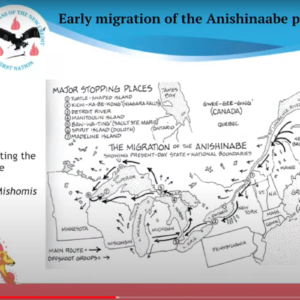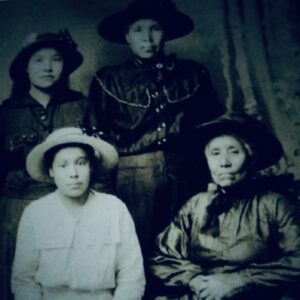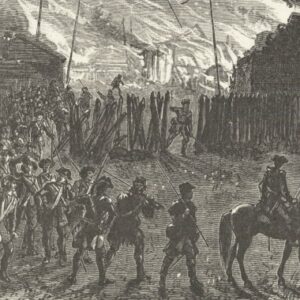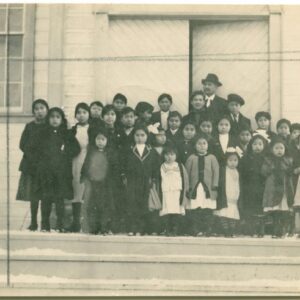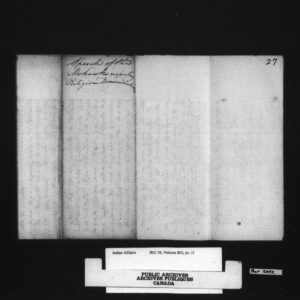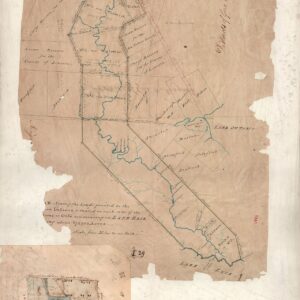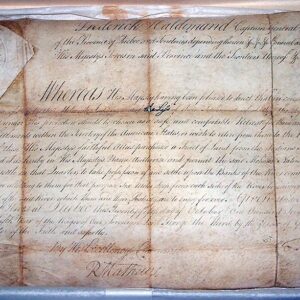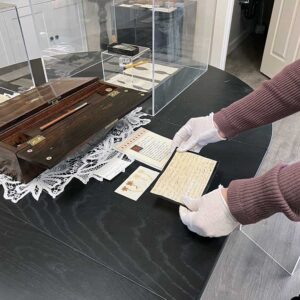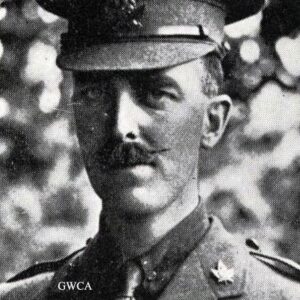
SIX NATIONS — Some people today believe the constitutional battle at Six Nations between a hereditary Confederacy government versus a municipal style of governance which votes in its leaders, started in the 1920’s.
There were loose organizations of residents in the early part of the century dissatisfied with the slowness of the existing confederacy council at that time, and mistrust that hereditary chiefs were not up to the task of keeping step in a rapidly changing world around them.
But even some hereditary Chiefs were swaying towards the municipal style of governance long before WWI when some historians say returning Six Nations soldiers brought that idea back home with them.
As early as 1861, some of the hereditary chiefs were pushing for an elective form of government to meet the rapidly moving changes around them and the clan families they represented.
On Dec. 20, 1861, a deputation of Chiefs met with Superintendent of Indian Affairs David Thorburn, which Thorburn recorded in his memoirs.
Those representing the Six Nations attending that meeting included Onondaga Chiefs George Buck, John Buck, Seneca Johnson (Seneca Chief), Cornelius Anderson (Nanticoke Chiefs, and Peter Smith (acting interpreter).
They informed Thorburn about what was going on at Six Nations at that time.
“A difficulty has arisen between a part of the Mohawk of the Upper division of the reserve and the Indians of the Lower Reserve,” they explained.
The delegation want their Superintendent’s opinion of the matter and after that, “the said Petition was now handed over to the Supt. For his perusal. The nature of the memorial is that many of the Tribes in the Lower division are opposed to the course taken by some parties in the Mohawk Nation who want to come under the municipal law and a large number of that nation is opposed to any change amongst their people.”
“They say in said memorial they do not want to come under the municipal law and a large number of that Nation is opposed to any change amongst their people. They say is said memorial they do not want the Indian Protection Act repealed and they fear they would be taxed and thereby cause its repeal…”
Thorburn considered the petitions set before him and decided now was not the time for such a sweeping change.
“In a word they do not want the Six Nations to come under the Municipal Laws although they do not oppose the few Mohawks who are in favour of it,” records Thorburn. “They are at full liberty to act as they may think fit.
“It appears that the petition in favour of the measure (of a Municipal governance model) is signed by some boys amongst the Mohawk who cannot know the nature of the change wished for. It has caused great excitement and trouble amongst the Six Nations.”
Only a few weeks later two separate delegations visited Thorburn with opposing viewpoints regarding the Municipal Act.
Those Chiefs opposed to becoming a municipality included Henry Anderson (Clerk), George and John Buck, William Green, and Seth Doxtater. They warned Thorburn not to believe those who report that the majority of Six Nations people and Chiefs wanted the Municipal Act to replace the Indian Protection Act.
They also told Thorburn they did not want to “debase any Mohawks the privilege of being set a part and put themselves under such Law if they think fit, but still they would rather have Six Nations unanimous in opposing any such measure.”
Promoting the Municipal Act proposal, were Chief John Smoke Johnson, G.H.M. Johnson (interpreter), Seneca Johnson, David Johnson, Thomas Isaac, William Jacobs and Jacob General. They also brought a petition with 300 names in support of a municipal government, according to minutes of the meeting of Jan. 10. 1862.
Thorburn reported to his superiors, “from my own knowledge of the Indians I am of the opinion that at the present time they are not prepared to become a municipality.”
At the time, the “Indians” were being influenced by a succession Superintendents of their affairs and other government officials, under the arbitrarily instituted, “Indian Protection Act.”
Along with many restrictions and unreasonable patriarchal oversight by the Crown in that Act, there were also some safeguards put in place addressing the many frauds and thefts of land by astute land speculators taking advantage of individual Haudenosaunee people.
Although this practice may have brought sudden wealth to certain individuals, it did nothing for the people at large who co-owned the Haldimand Tract as a body.
The preamble of that initial document spelled out a plan to help protect the Indian lands from the hands of the unscrupulous of both sides.
The preamble to the Act states: “Whereas it is expedient to make provision for the protection of the Indians in Upper Canada, who in their intercourse with the other inhabitants thereof are exposed upon by the designing and unprincipled, as well as to provide more summary and effectual means for the protection of such Indians in the unmolested possession and employment of the lands and other property in their use or occupation.”
Its intent seems to have been to protect the inheritance of those yet to come, in respect of their traditional world views. But it soon became quite evident that these noble principles, if they ever were heartfelt, would become a green light to lawmakers and judges, many of whom were also land speculators, to find ways of defrauding of their land, or blocking all roads to justice through legislation for Six Nations and other indigenous nations of Ontario.
Without something in place to regulate the sale of Indian land, individual Six Nations land holders were selling off acres of Six Nations’ communal land at alarming rates for personal gain.
The plan of the Act was to allow the Crown to administrate all Indian land sales on their behalf, and for their exclusive purposes, and managing their funds as ordered by the Chiefs council. On its face that seemed the most expedient way to deal with white-man’s commerce. And it may have worked well, if not for the trifecta of wealth, greed and power being consolidated in the British Crown and its representative politicians.
After more Six Nations delegation visits from both sides of the debate, Thorburn decided not to push the Municipal Act at that time. It would be only the first of several attempts since then to woo Six Nations into becoming just another municipality in Canada and therefor open to taxation and giving up other rights as Six Nations people.


